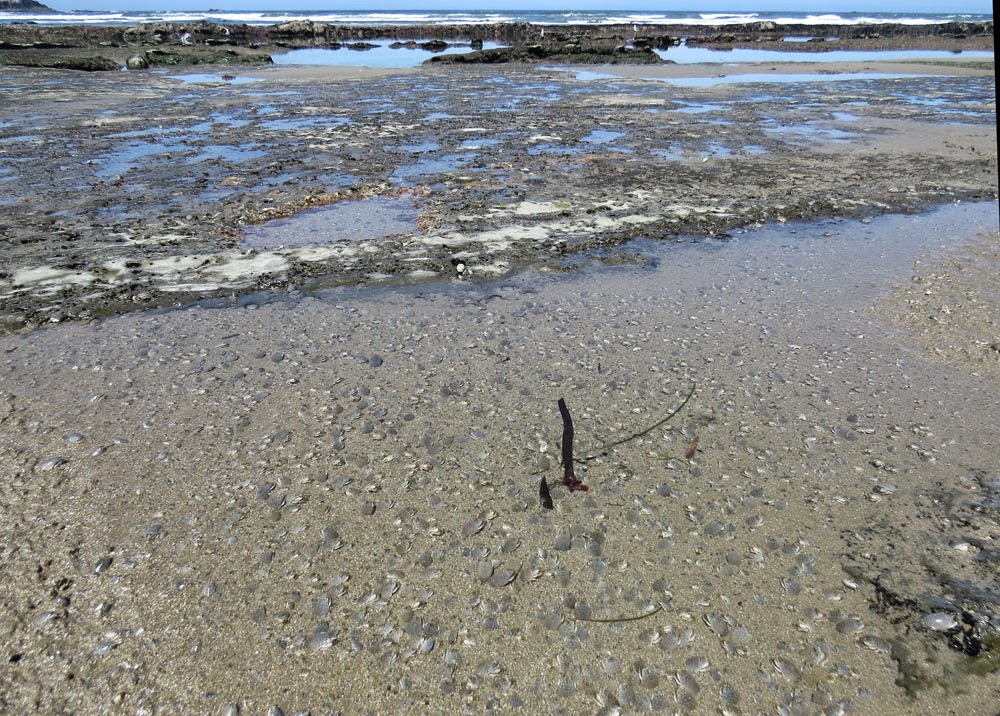Here’s a
mishmash of photos documenting my week –plus in Alaska from May 29 to June 9
this year, some from my good friends Will and Beth Russell. For example, the
one above was taken by Will as we staged our 9 coolers, 10 boxes of food, and 2
totes with 30 dozen eggs at the Anchorage airport, ready for check-in to our
flight to Nome. Each of the 15 participants of the WINGS tour group to Gambell
claimed a cooler or box or two as part of their checked luggage.
Even before
we had taken off from the Anchorage airport, we had a natural history moment.
In the cabin of our Boeing 737, as we were being pushed away from the gate, a
large moth was bouncing against the ceiling, working its way back from the
front .
Passengers were commenting, some of them clearly uncomfortable. As it came
closer to us, I quickly unbuckled my seat, stood up, and grabbed it. I’ve
handed lots of sphinx moths and know you need a firm grip and can’t damage them
very easily. I recognized the genus, as it was the same size and shape as our White-lined
Sphinx, but I had to use my iPhone and Bugguide (my phone temporarily off of
airplane mode) to find that this is the Galium Sphinx, Hyles gallii. We hadn’t started taxiing yet, so the attendants
opened the back door of the jet a crack and let me release it. They then thanked
me publicly over the loud speaker and everyone applauded.

When we
arrived in Nome, it was clear something was amiss. Alaska Airlines had decided
that eight of our nine coolers wouldn’t fit on the jet, despite their 400 pounds
being only a tiny fraction of the weight of the passengers and other cargo. So
we arrived in Gambell without the fresh Copper River salmon I had purchased the
day before for dinner. Luckily, the one cooler that did arrive had something –
our pork loin meant for day 5; and the boxes that did arrive had many of the
vegetables, enough to piece something together for dinner. Here’s what we had
tonight:
Dinner:
Roast Pork Loin with Apricot, Cherry, and Pecan Stuffing | Green Beans with
Toasted Hazelnuts and Brown Butter | Leafy Green Salad with Balsamic-Dijon
Vinaigrette | Baguette
Another
natural history moment came this same evening, while Beth was helping me
prepare the salad by washing the organic lettuce I had bought in Anchorage. You
should always wash your vegetables to get rid of dirt at the very least. But if
they’re not organic, there’s always the possibility of trace herbicides and
pesticides, and there’s no guarantee that a simple rinse will get rid it them
all – some are even absorbed by the plant and can’t be washed off. But
with organic produce, you may be surprised by the occasional insect, and this
time, Beth discovered this live Mexican Tiger Moth, Notarctia proxima, nestled in the base of the leaves! I was amazed
to have seen two lifer moths in one day in Alaska, and as far as I can remember,
I had never seen any moth in Alaska. This one was obviously a hitchhiker from
the source, and though I don’t remember reading where the lettuce came from
(the natural food store in Anchorage actually labeled the source of all their
produce), the range map of this moth indicates that the lettuce probably came
from California.
The rest of
my week at Gambell was mostly spent in the kitchen, on my feet, from 4:45 to at
least 10:45 p.m. (one night until 2:00 a.m.). Our menu, modified from the
original to accommodate for the lack of coolers until the afternoon of our
second day there:
June 2
Breakfast:
Fluffy Scrambled Eggs| Buttermilk and Buckwheat Pancakes
Lunch: Egg
Salad Sandwiches| Butternut Squash and Chickpea Soup
Dinner:
Oven-roasted Salmon with Tangerine and Ginger Relish | Baked Wild Rice |
Parsnip Fritters | Shaved Daikon and Turnip Salad with Arugula and Baby Spinach
with Chunky Garlic and Pimentón Dressing
Dessert:
Blueberry-Peach Cobbler with Lemon-Cornmeal Biscuit Topping and whipped cream
June 3
Breakfast:
Fluffy Scrambled Eggs | Cream Biscuits with Cheddar Cheese | Oven-fried
Bacon Sausage
Lunch:
Roast Turkey Breast and Cheese Sandwiches | French Onion Soup with croutons
Dinner: Crispy
Roast Lemon Chicken | Maple-roasted Brussels Sprouts and Rutabaga with
Hazelnuts | Leafy Green Salad with
Foolproof Vinaigrette | Tartine’s Country Bread
Dessert:
Fresh Strawberry Mousse
June 4
Breakfast:
Spinach-And-Fontina Strata | Sausage | Fresh Fruit
Lunch:
Grilled Cheese Sandwiches | Creamless Creamy Tomato Soup
Dinner:
Lasagna Bolognese and Vegetable Lasagna |Fennel-and-Endive Salad with Dried
Currants and Walnuts | Classic American Garlic Bread
Dessert: Wicked Good Boston Cream
Pie
June 5
Breakfast:
Fluffy Scrambled Eggs | French Toast | Oven-fried Bacon
Lunch:
Roast Turkey Breast and Tuna Sandwiches |Broccoli-Cheese Soup
Dinner:
Glazed All-beef Meatloaf | Quinoa-stuffed Eggplant | Raw Kale Salad with Lemon
and Toasted Almonds | Tartine’s Country Bread
Dessert:
Classic Apple Pie | Vanilla Ice Cream
June 6
Breakfast:
Sonoran Sunrise Bake | Fresh Tomato Salsa | Fresh Fruit
Lunch:
Grammy Hoyer's Olive Sandwiches | Hearty Chicken Noodle Soup
Dinner:
Roast Cod Fillets with Potatoes, Garlic and Olive Oil | Sugar Snap Peas with
Asian Dressing | Walnut-Apple
Celery Salad w/ Mustard Vinaigrette | Tartine’s Country Bread
Dessert:
Chocolate Cake and Passionfruit Mousse
June 7
Breakfast:
Fluffy Scrambled Eggs | Blueberry Scones |Fresh Fruit
Lunch:
Homemade Pizza | Zuppa Toscana
Dinner: Egg Drop Soup | Gingery Chicken Stir-fry
with Bok Choy | Steamed Jasmine Rice
Dessert: Blood Oranges
with Caramel Sauce and Cocoa Nibs
June 8
Breakfast: Fluffy
Scrambled Eggs | Overnight Sticky Buns
Here are the
sticky buns for the last morning’s breakfast, perhaps the most decadent thing I
made (though the Boston Cream Pie is a close second). Almost all other baked
goods used much less butter, often only half the sugar called for, and whole
wheat flour. Not these. Once a year is ok for this most delicious of poisons.
I did get
outside a couple times. On our second day came word over the radios of a cuckoo
a short walk from the lodge. I was ahead on lunch prep (and without the coolers
yet didn’t have much to work with anyway), so I headed out. Before long the
bird was spotted by Gavin and others, and I came to the assembly of all the
birders, independents and other birding tour groups.
This female Common
Cuckoo, probably a second-spring bird, was taking shelter from the strong SW
winds in the middle of town.
Late one
night I also took a walk to the NW point to get my puffin fix. On the way was
this Lapland Longspur.
And near
shore was at least one Horned Puffin, with many dozens flying past farther out,
along with even more Tufted Puffins and numerous other alcids.
This is the
view to the NW, and yes, you can see Russia from Alaska. But Sarah Palin didn’t
actually know you could see it from here, nor would she even think of setting
foot here, if she knows the place even exists; she was just being boastful in
an exaggerated way, exposing her extreme ignorance of geography.
This is another
view of the Chukchi Peninsula, just 36 miles away. Yes, it was cold (that’s ice
on the Bering Sea, after all) but only about 34°F, and the north wind was
light. Bundled up well, I was actually getting warm in this midnight sun.
On our last
morning, however, over an inch of snow and very limited visibility seemed to
doom our chances for an on-time departure, and I began to make mental plans for
an emergency lunch. However, the plane arrived around 9:40, and we made our
escape to Nome, thence Anchorage.
Back in
Anchorage, it was practically tropical. This is Lake Hood, behind our first and
last night’s hotel near the airport.
These Tule
Bluets, Enallagma carunculatum, were
abundant on the walls of the hotel and in the grass around the lake.
Later that
afternoon, my friend Dave Sonneborn took me to Potter Marsh just east of the
city.
This Arctic
Tern is by the main pullout on the highway and is probably the most
photographed individual of its species in the world.
Dave pointed
out this Common Muskrat at the same location.
I’m now
recovering from my week in Alaska at my dad’s in Corvallis, Oregon. You’d think
that the amount of time on my feet in Gambell would be tiring, but it wasn’t
while I was there, or so I thought. But once I had a chance to sleep in – 10+
hours the first night – then the exhuastion flowed over me, and in one day I finally
felt like I had just run a marathon. I can’t wait until next year!



































































